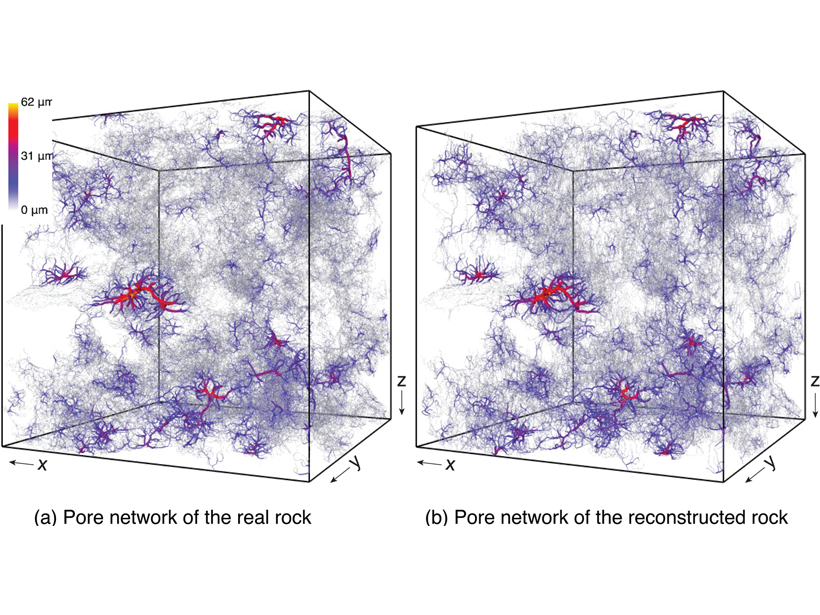Source: Journal of Geophysical Research: Solid Earth
Digital rock physics utilizes a paradigm of first taking a digital image of a rock and then performing a computer simulation using the digital image. This has many applications, such as hydrogeology and geologic carbon dioxide sequestration. The imaging portion of the task can be costly because high-resolution images of 3D rocks often must be pieced-together by taking many images of 2D rock slices.
You et al. [2021] utilize a machine learning technique called a “progressive growing generative adversarial network” (or PG-GAN) to reduce the cost of producing high-resolution 3D rock images. The PG-GAN learns to generate realistic, high-dimensional rock images from noise in a low-dimensional space. A given rock image can be reconstructed by finding an optimal point in the low-dimensional space. Performing interpolation of the rock images directly results in a low-quality reconstruction, but the PG-GAN produces a high-quality result after interpolation in the low-dimensional space. Using the PG-GAN to interpolate in the low-dimensional space enables the accurate digital reconstruction of a rock using fewer 2D slices, which reduces the cost of the process.
Citation: You, N., Li, Y. E., & Cheng, A. [2021]. 3D carbonate digital rock reconstruction using progressive growing GAN. Journal of Geophysical Research: Solid Earth, 126, e2021JB021687. https://doi.org/10.1029/2021JB021687
This research article is part of a cross-journal special collection on “Machine Learning for Solid Earth Observation, Modeling, and Understanding”. Find out more and read other articles.
—Daniel O’Malley, Associate Editor, JGR: Solid Earth
Text © 2021. The authors. CC BY-NC-ND 3.0
Except where otherwise noted, images are subject to copyright. Any reuse without express permission from the copyright owner is prohibited.

